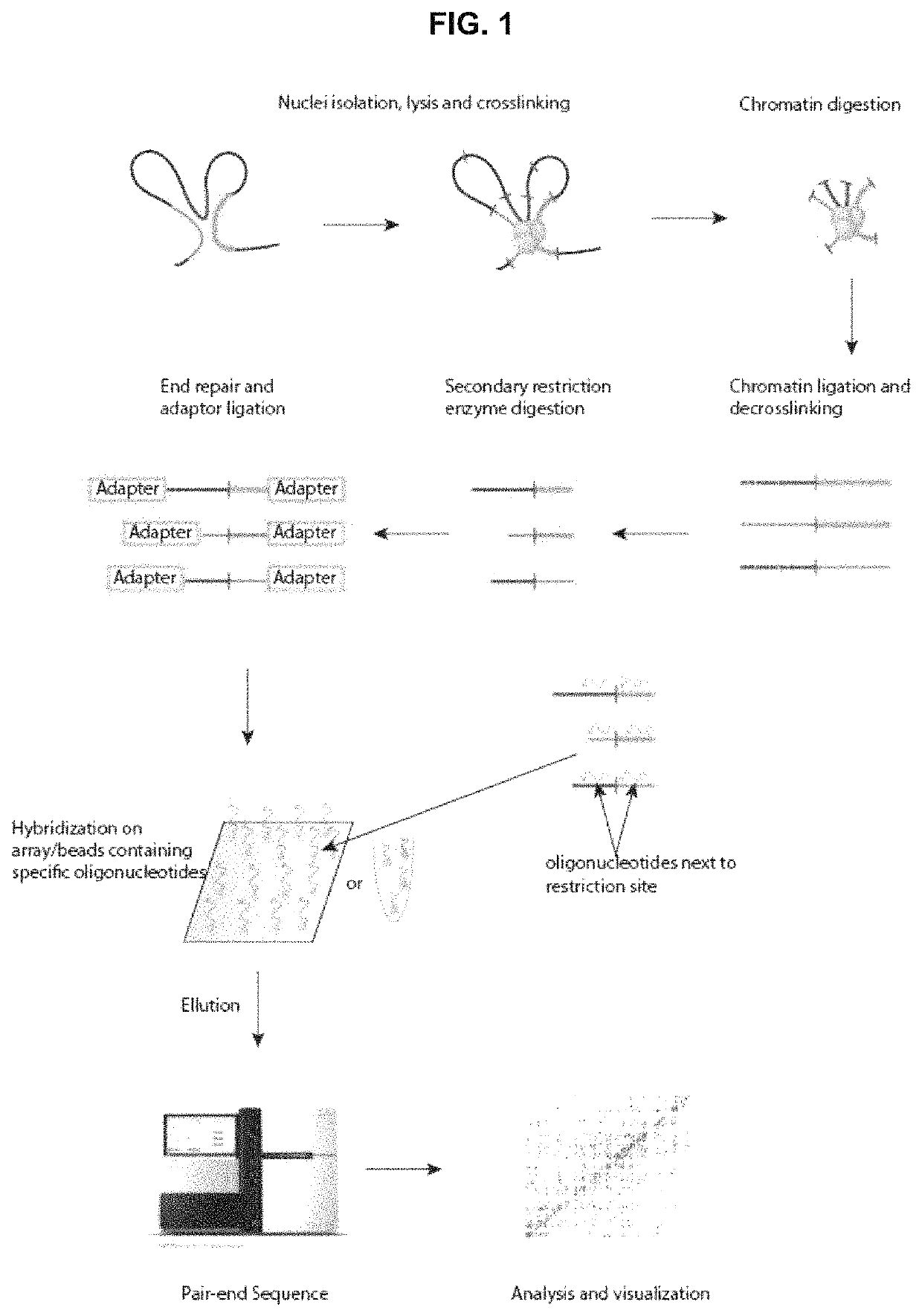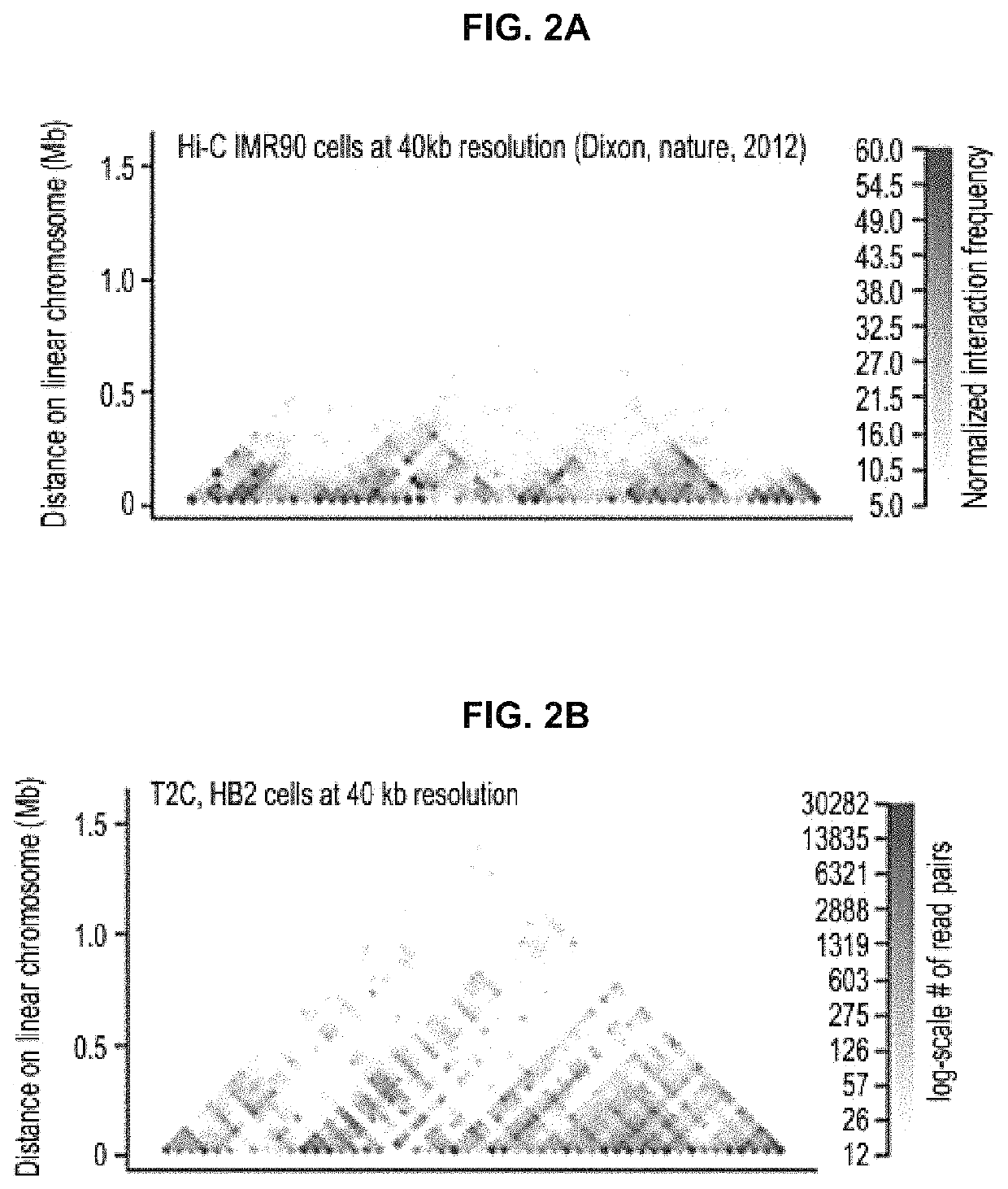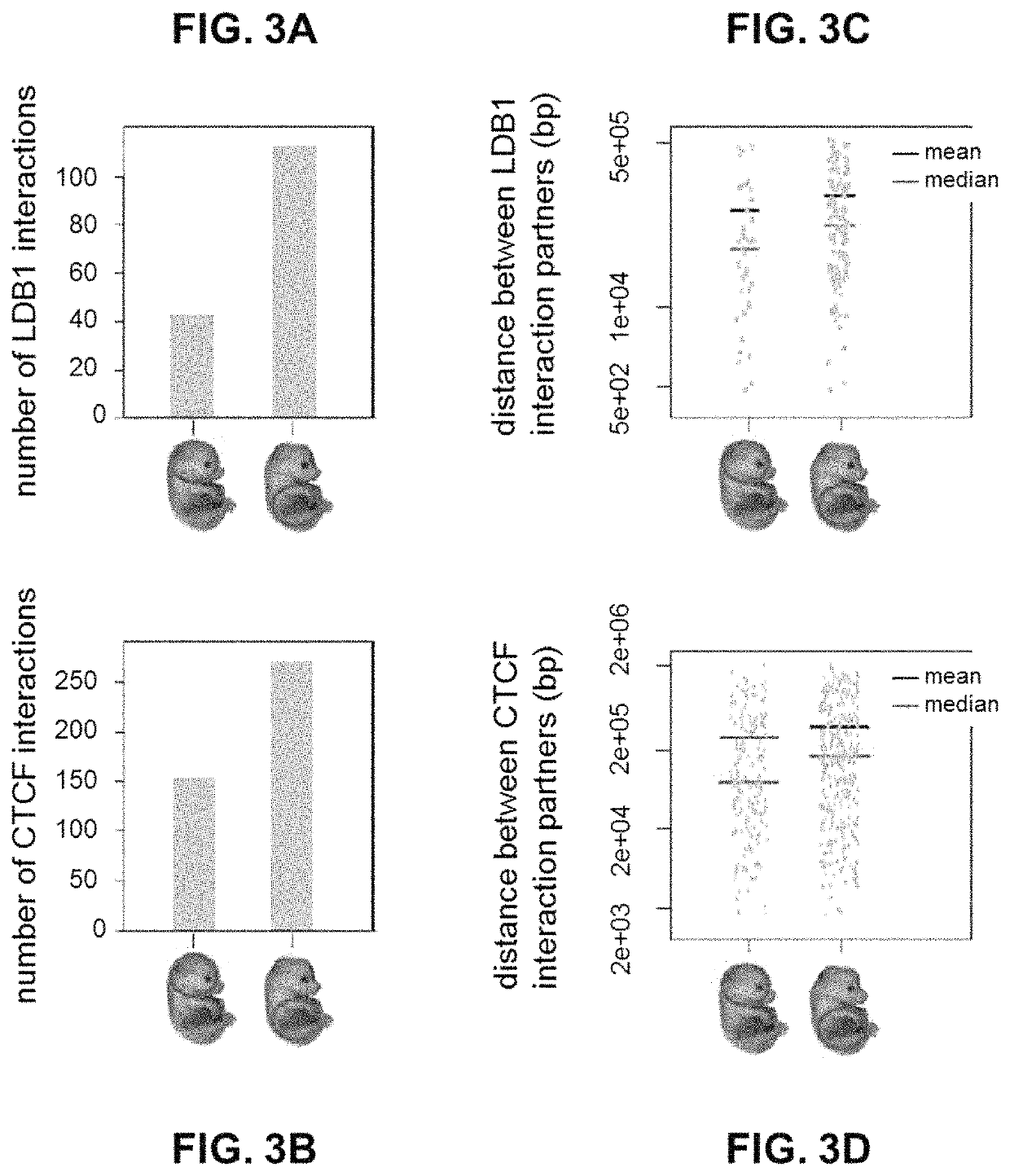Method for analysing the interaction of nucleotide sequences in a three-dimensional DNA structure
a nucleotide sequence and three-dimensional technology, applied in the field of three-dimensional dna structure analysis of nucleotide sequence interaction, can solve the problems of requiring prior knowledge, difficult to understand the 3c and 4c techniques, and relatively unknown regulatory networks, so as to achieve better coverage and resolution of the locus.
- Summary
- Abstract
- Description
- Claims
- Application Information
AI Technical Summary
Benefits of technology
Problems solved by technology
Method used
Image
Examples
example 1
ifies Known Long-Range Interactions
[0157]To test the method and to compare it with other methods, the inventors first chose the IGF / H19 region on human chromosome 11 that has previously been used to study the role of cohesion and CTCF for chromosomal long-range interactions and for which Hi-C and 4C data are already available for comparison.
[0158]A set of array-based oligonucleotides were designed mapping near the ends of all the BglII fragments covering an approximately 2.1 Mbp region of the H19 locus, totaling 524 oligonucleotides corresponding to 344 BglII fragments. A number of BglII fragments did not allow the design of an oligonucleotide representing one of the ends because the sequence was either repetitive or the 4 bp recognition enzyme site (NlaIII) was too close to the BglII site or completely absent from the BglII fragment. The crosslinked BglII restricted DNA was ligated, decrosslinked, digested with NlaIII enzyme and hybridized to the oligonucleotide array after decross...
example 2
ifies Different Interaction Networks Based on Different Biological Materials
[0162]In order to also test whether different gene expression states can be detected in different biological tissues with different chromatin interactions, T2C was applied in in vivo mouse primary erythroid cells from mouse fetal liver and brain cells from E12.5 mice. The well-studied β-globin locus was used as an example in a region of ˜2 MB around the gene. It is well established that as β-globin is expressed more highly in primary erythroid cells compared to fetal brain cells, a denser number of interactions is expected around the gene and between the gene and its locus control region (LCR) in this cell type. The β-globin region was digested with HindIII as the 6 bp enzyme and 799 oligonucleotide probes were designed to cover the ends of the HindIII fragments in the locus (724 fragments, many of which are repetitive) and after crosslinking re-digested with DpnII.
[0163]The analysis of the hybridised fragme...
example 3
tion of the 3D Structure of Genomes
[0177]The dynamic three-dimensional chromatin architecture of genomes and the obvious co-evolutionary connection to its function—the storage and expression of genetic information—is still, after ˜130 years of concentrated research, one of the central issues of our time. In this example the detailed 3D architecture of the mouse and human genome can be determined directly for the first time from a few to the mega base pair level by already visual means combining a novel superior selective high-throughput high-resolution chromosomal interaction capture of all physical genomic interactions (HRHTiCIC2), scaling analysis, and polymer simulations: the clearly existing and differently compacted chromatin fibre is folded into loops of ˜30-150 kbp which form defined loop aggregates / rosettes (sub-chromosomal domains) of ˜500-1500 kbp connected by a linker. Complex (helical) loop and loop-loop architectures exist and interactions vary only to a minor but signi...
PUM
| Property | Measurement | Unit |
|---|---|---|
| Tm | aaaaa | aaaaa |
| pH | aaaaa | aaaaa |
| diameter | aaaaa | aaaaa |
Abstract
Description
Claims
Application Information
 Login to View More
Login to View More - R&D
- Intellectual Property
- Life Sciences
- Materials
- Tech Scout
- Unparalleled Data Quality
- Higher Quality Content
- 60% Fewer Hallucinations
Browse by: Latest US Patents, China's latest patents, Technical Efficacy Thesaurus, Application Domain, Technology Topic, Popular Technical Reports.
© 2025 PatSnap. All rights reserved.Legal|Privacy policy|Modern Slavery Act Transparency Statement|Sitemap|About US| Contact US: help@patsnap.com



